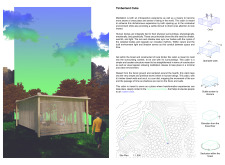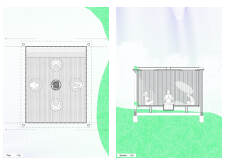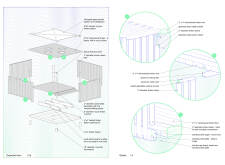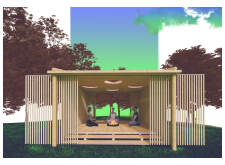5 key facts about this project
Unique Features and Design Approaches
What differentiates the Timberland Cube from conventional meditation spaces is its emphasis on a fluid relationship between the interior and the natural world. The structure employs operable timber dowel walls that allow for flexible configurations, accommodating various group sizes and changing activities. This adaptability is essential in a meditation context, where the spatial atmosphere can significantly influence user experience.
Additionally, the inclusion of oculi, or circular skylights, harnesses natural light and shadows throughout the day. This feature enhances the sensory experience, aligning with biophilic design principles that advocate for direct connections with nature. By focusing on local materials, including timber and stone, the project reinforces sustainability and contextual relevance.
Spatial Arrangement and Functional Details
The Timberland Cube is elevated using concrete footings to minimize disruption to the forest floor and provide an unobstructed view of the landscape. This elevation, along with a carefully considered orientation, ensures ample natural light enters the space while creating dynamic shifting patterns throughout the day.
Strategically placed windows and doorways invite the forest into the interior, merging built and natural environments. The primary materials—local timber, glass panels, and concrete—are selected not only for aesthetic value but also for durability and environmental harmony. The design also considers acoustic properties, essential for meditation spaces, ensuring a serene atmosphere conducive to deep inner contemplation.
For those interested in understanding the Timberland Cube project more comprehensively, exploration of architectural plans, architectural sections, and architectural ideas can provide valuable insights into its innovative approach. This project illustrates how architecture can enhance human experience in natural settings and offers a model for designing spaces dedicated to mindfulness and reflection.


























